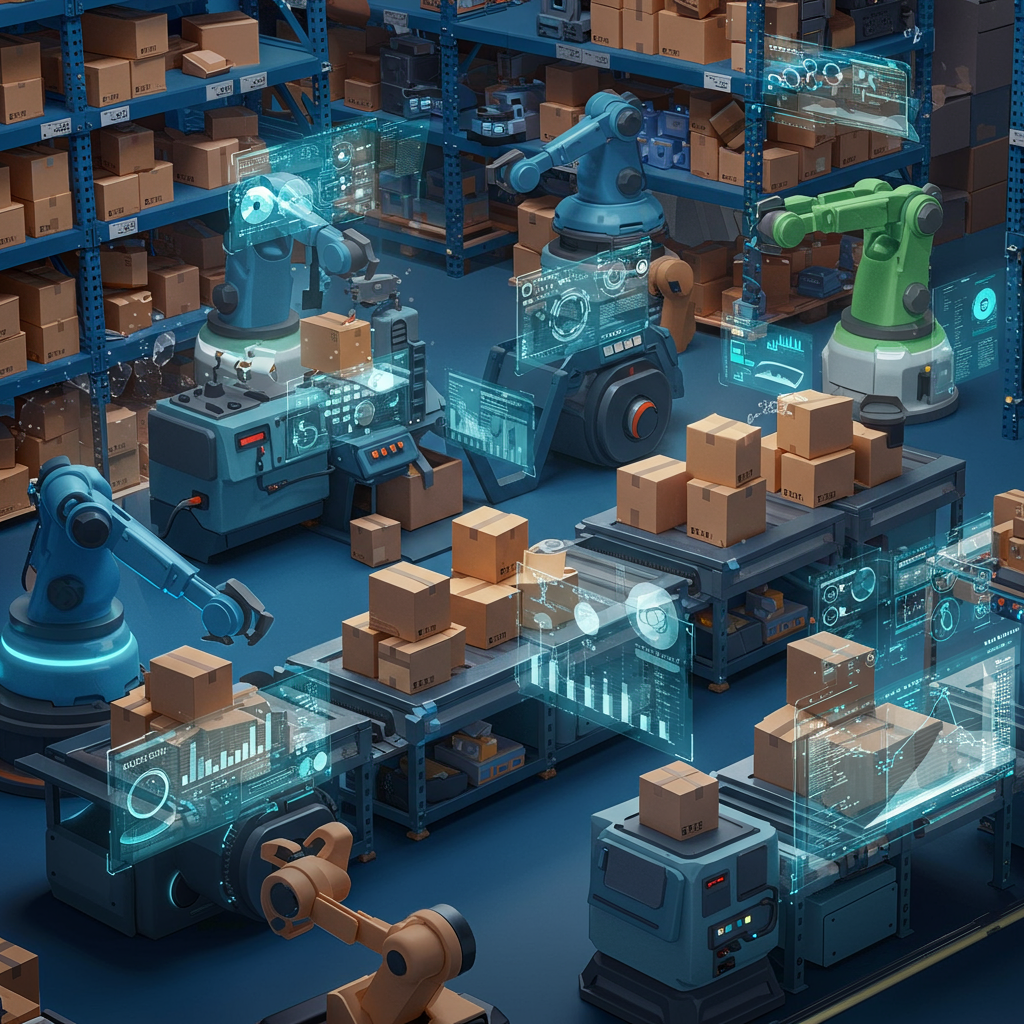A Merchant’s Guide to Leveraging Artificial Intelligence for Smarter Supply Chains
As a merchant navigating the dynamic world of e-commerce, I’ve always understood that inventory management is the backbone of a successful Shopify store. It’s a delicate balance: too much stock ties up capital, while too little leads to missed sales and unhappy customers.
For years, I wrestled with spreadsheets, manual forecasts, and gut feelings, often finding myself either overstocked with slow-moving items or scrambling to replenish popular products that sold out unexpectedly. It was a constant source of stress and inefficiency.
Then, I started hearing more and more about Artificial Intelligence, or AI, and its potential to transform various industries. My initial thought was, “Could this really help *my* Shopify store?” I was skeptical but intrigued.
What I’ve come to realize is that AI isn’t just a buzzword; it’s a powerful set of technologies that can analyze vast amounts of data, learn from patterns, and make predictions or decisions with remarkable accuracy.
When applied to inventory management, AI moves us beyond reactive decision-making to a proactive, predictive approach. It’s about making smarter choices before problems even arise.
One of the most impactful applications I’ve discovered is AI-powered demand forecasting. Traditional forecasting relies on historical sales data, but AI takes this to an entirely new level.
My experience shows that AI algorithms can analyze not only past sales but also external factors like seasonal trends, promotional activities, economic indicators, social media sentiment, and even local weather patterns.
This comprehensive analysis allows AI to predict future demand with a precision that manual methods simply cannot match, helping me anticipate customer needs far more accurately.
Building on accurate demand forecasts, AI also revolutionizes automated reordering. Instead of manually checking stock levels and placing orders, AI systems can do it for me.
I can set up rules and thresholds within my Shopify integrated AI tools, and the system will automatically generate purchase orders to suppliers when stock levels hit a predefined minimum, ensuring I always have enough product.
This automation significantly reduces the risk of stockouts, meaning fewer lost sales opportunities, and simultaneously minimizes overstocking, which frees up valuable capital that would otherwise be tied up in stagnant inventory.
Beyond just ordering, AI can optimize my warehouse operations. I’ve seen how it can analyze product movement and order patterns to suggest optimal warehouse layouts and picking paths.
This means my team spends less time searching for items and more time efficiently fulfilling orders, leading to faster shipping times and happier customers. It’s about streamlining the entire fulfillment process.
AI also plays a crucial role in supplier relationship management. By analyzing supplier performance data, such as lead times, reliability, and pricing fluctuations, AI helps me identify the most dependable partners.
It can even suggest optimal order quantities and timing to leverage bulk discounts or avoid potential supply chain disruptions, ensuring I get the best value and consistent supply.
Even returns management, often a headache for merchants, can be improved with AI. AI can predict return rates for specific products, helping me adjust inventory levels accordingly and optimize reverse logistics processes.
Furthermore, AI provides real-time inventory visibility across all my sales channels, whether it’s my Shopify store, a physical pop-up, or a marketplace integration. I always know exactly what I have and where it is.
The financial benefits I’ve experienced are substantial. By reducing stockouts and overstock, I’ve seen a direct improvement in my cash flow and a significant reduction in carrying costs associated with excess inventory.
Customer satisfaction has soared because products are consistently in stock, and orders are fulfilled more quickly. This builds trust and encourages repeat business, which is invaluable for any e-commerce venture.
Perhaps one of the most underrated benefits is the time savings. Automating these complex processes frees up countless hours that I used to spend on manual inventory tasks, allowing me to focus on growth strategies and customer engagement.
For fellow Shopify merchants looking to embark on this AI journey, my first piece of advice is to focus on data quality. AI is only as good as the data it’s fed, so ensure your product information, sales history, and customer data are clean and accurate.
Next, explore the Shopify App Store. There’s a growing ecosystem of AI-powered inventory management apps and integrations designed specifically for Shopify, offering features from advanced forecasting to automated reordering.
Don’t feel pressured to implement everything at once. I recommend starting small, perhaps with an AI-powered demand forecasting tool, and then gradually integrating more advanced features as you become comfortable and see the benefits.
Continuous monitoring and refinement are also key. AI models learn and improve over time, but they still require oversight. Regularly review the insights and adjust parameters as your business evolves.
While there’s an initial investment in terms of time and potentially cost for these solutions, I firmly believe the long-term returns in efficiency, profitability, and customer satisfaction far outweigh these challenges.
The future of e-commerce supply chains is undoubtedly intertwined with AI. As the technology advances, I anticipate even more sophisticated solutions that will further automate and optimize every aspect of inventory management.
Embracing AI isn’t just about staying competitive; it’s about building a more resilient, efficient, and profitable business. It has truly transformed how I manage my Shopify store, allowing me to scale with confidence.
What do you think about the potential of AI in revolutionizing inventory management for your Shopify store? I’d love to hear your thoughts and experiences.






